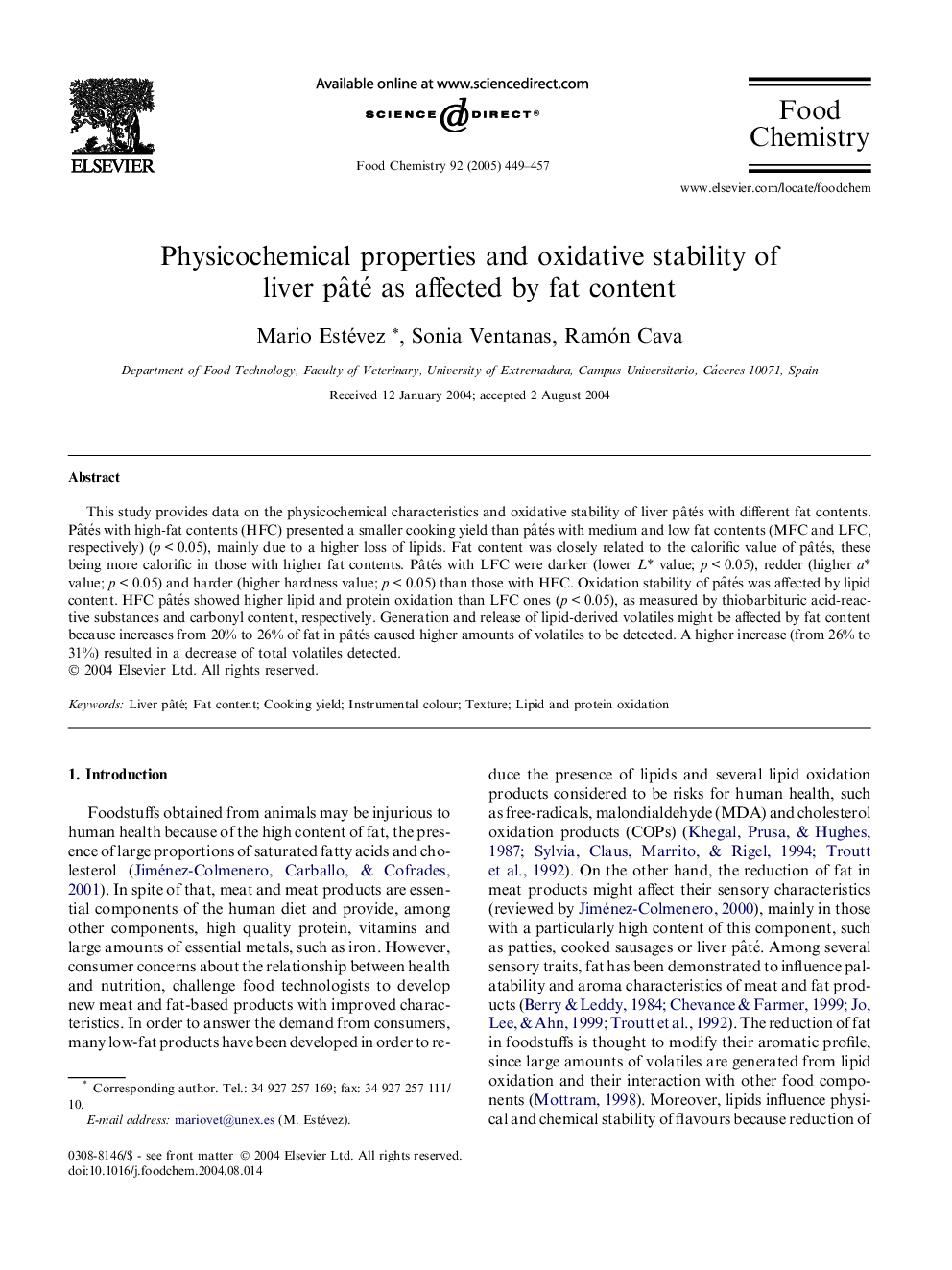| Article ID | Journal | Published Year | Pages | File Type |
|---|---|---|---|---|
| 10544064 | Food Chemistry | 2005 | 9 Pages |
Abstract
This study provides data on the physicochemical characteristics and oxidative stability of liver pâtés with different fat contents. Pâtés with high-fat contents (HFC) presented a smaller cooking yield than pâtés with medium and low fat contents (MFC and LFC, respectively) (p < 0.05), mainly due to a higher loss of lipids. Fat content was closely related to the calorific value of pâtés, these being more calorific in those with higher fat contents. Pâtés with LFC were darker (lower L* value; p < 0.05), redder (higher a* value; p < 0.05) and harder (higher hardness value; p < 0.05) than those with HFC. Oxidation stability of pâtés was affected by lipid content. HFC pâtés showed higher lipid and protein oxidation than LFC ones (p < 0.05), as measured by thiobarbituric acid-reactive substances and carbonyl content, respectively. Generation and release of lipid-derived volatiles might be affected by fat content because increases from 20% to 26% of fat in pâtés caused higher amounts of volatiles to be detected. A higher increase (from 26% to 31%) resulted in a decrease of total volatiles detected.
Related Topics
Physical Sciences and Engineering
Chemistry
Analytical Chemistry
Authors
Mario Estévez, Sonia Ventanas, Ramón Cava,
